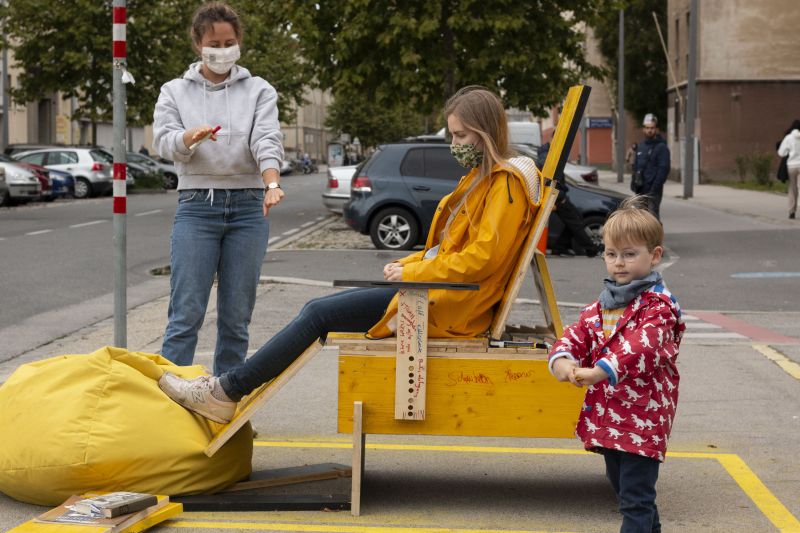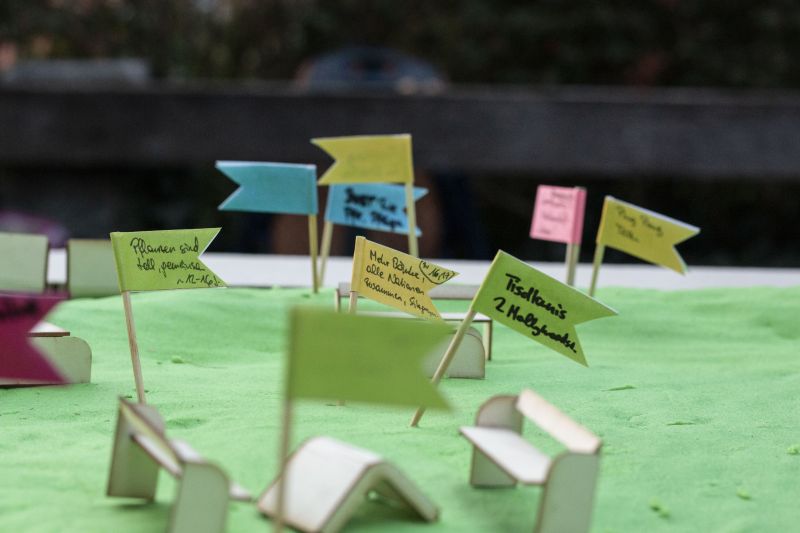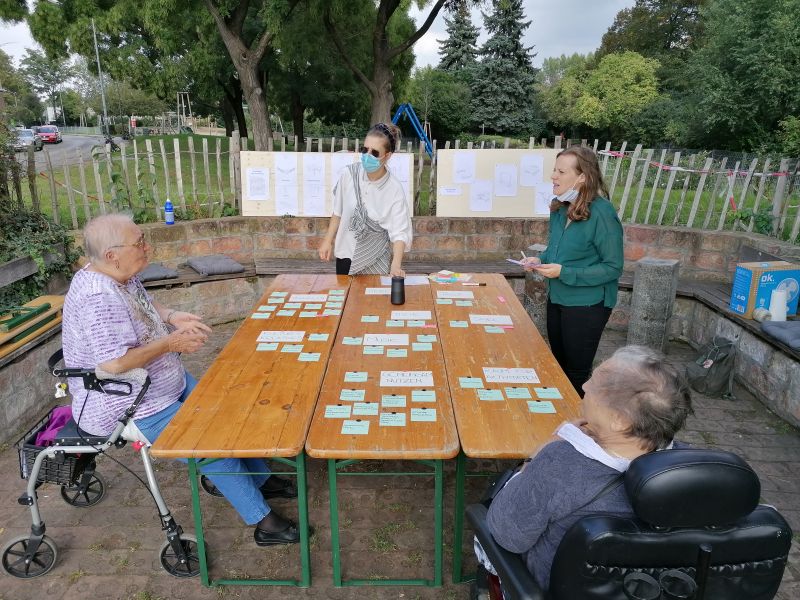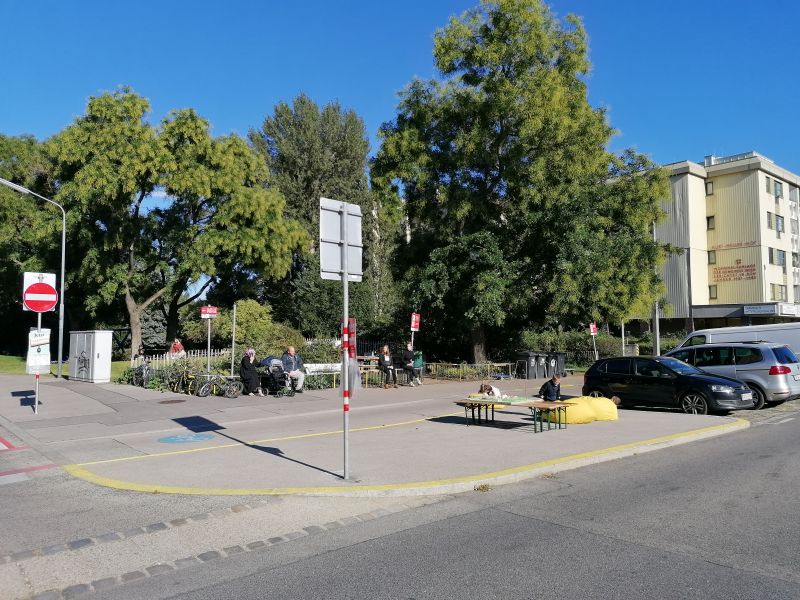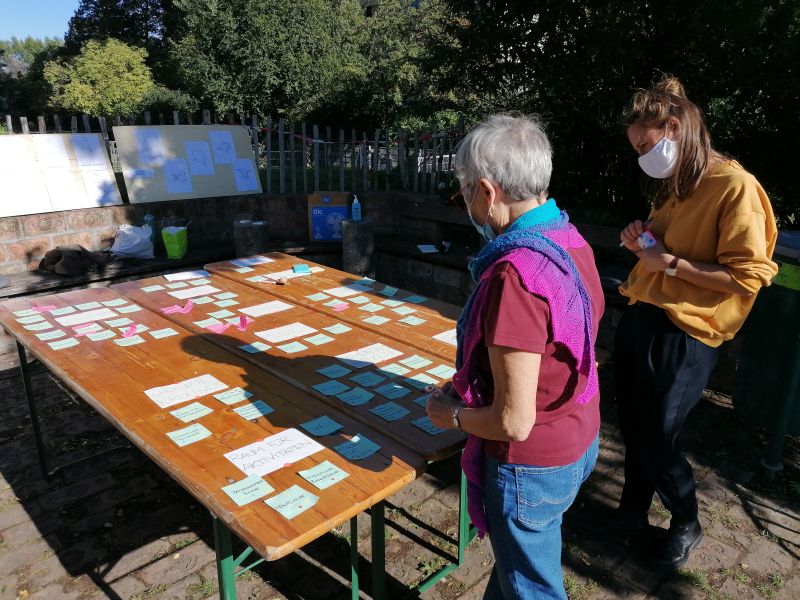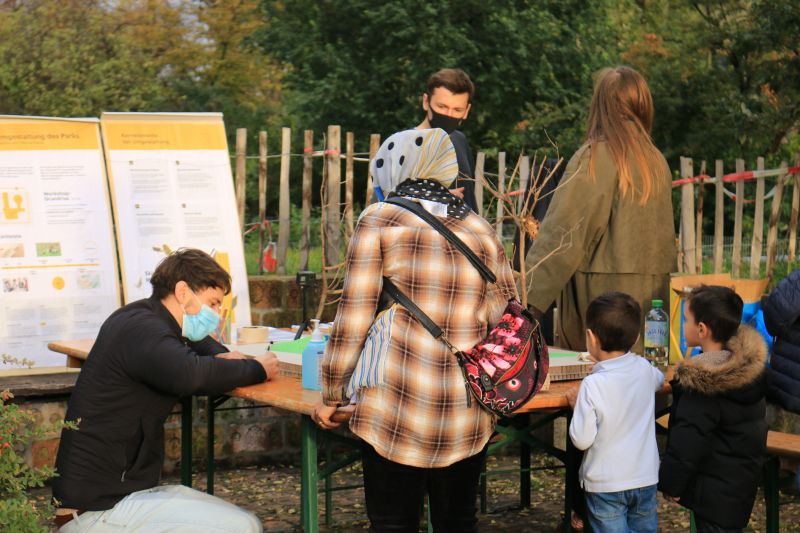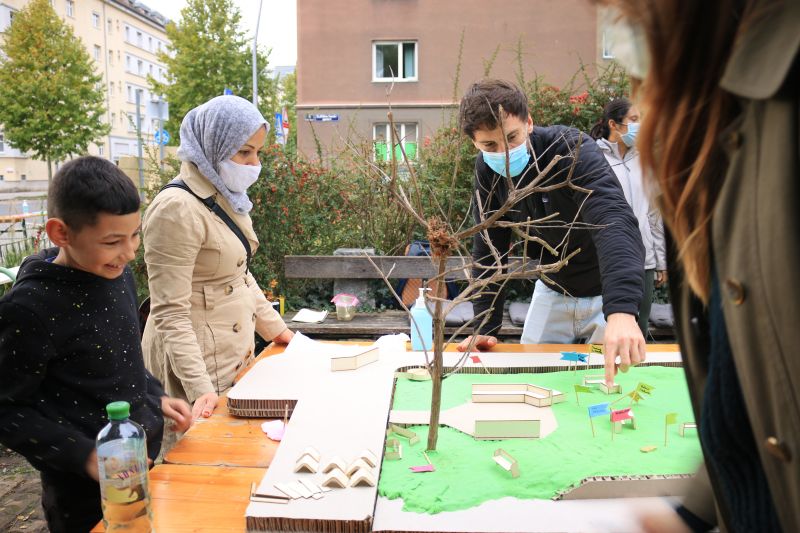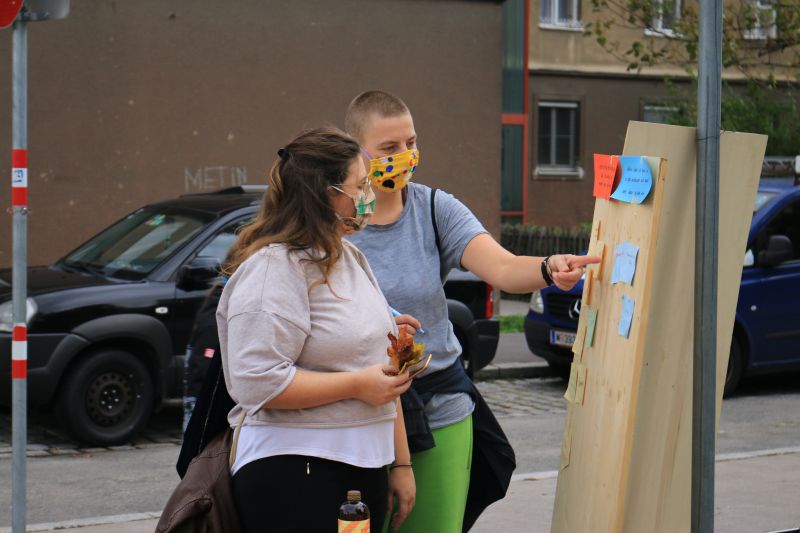Re-sourcing Commons
Martin Färber, Christina Schraml, Maria Kanzler
The Social Design department together with residents of the neighbourhood planned the partial redesign of a (so far nameless) park at the intersection of Engerthstraße and Offenbachgasse in cooperation with the administration of Vienna’s 2nd district and the Wiener Stadtgärten (MA42, park administration). The redesign builds upon the principles of participation (urban citizenship) and circular economy.
Previous studies by Social Design Studio with the participation of many residents had shown that people in the zone between the Danube and Prater want more than just new furniture in the nearby green areas. Many are looking for a place in the neighbourhood that could serve as a local centre. In addition to a structural redesign of the park at Offenbachgasse, the main focus was therefore on both a low threshold participation process and the joint activation of this green public space, usable by and attractive for all.
The participation process was organized in public workshops. Residents could take part in finding a utilization concept, collecting necessities and ideas of the neighbourhood, and starting on a future naming of the park. Ideas were then condensed, transformed into key design element proposals, discussed and refined again with the residents.
What are the specific needs of the old and the young? What do we expect from the park and the neighbourhood? What material and immaterial resources do we want to share? The outcomes of the elaborations with the neighbours in this stage served as a base for the final design proposal to the City of Vienna.
The project follows –- as far as possible – the principles of a circular economy. All material resources previously built-in at the park (historic bricks, granitic boulders, steel fences,...) were taken into consideration and re-used in new contexts. The re-design features an expansion of the Viennese urban furniture by re-combining the waste parts of the most common tubular steel standard furniture of the city.
Documentation of the process as well as findings, international case studies, interviews, topic related texts, videos and illustrations will be openly accessible via stadtaufmoebeln.uni-ak.ac.at
Team: Martin Färber, Christina Schraml, Maria Kanzler, Anna Vasof, asphalt-kollektiv (Felix Steinhoff & Natascha Peinsipp)
Cooperation partners: Vienna's 2nd district, MA 42 Parks and Gardens, MA 19 Architecture & Urban Design, Haus Prater, Wohnpartner der Stadt Wien, Youth Centre Bassena, Stuwerviertel, Bücherei Engerthstraße, FORMAT60+
Workshop Team: Catalin Betz, Ana Paulina Flores de la Torre, Sabrina Haas, Jan Krek, Laura Mann, Jelena Maschke, Lena Michalik, Fabio Spink, Orest Yaremchuk, Michalina Zadykowicz
Documentation: Anna Vasof
- Location
- Vienna
